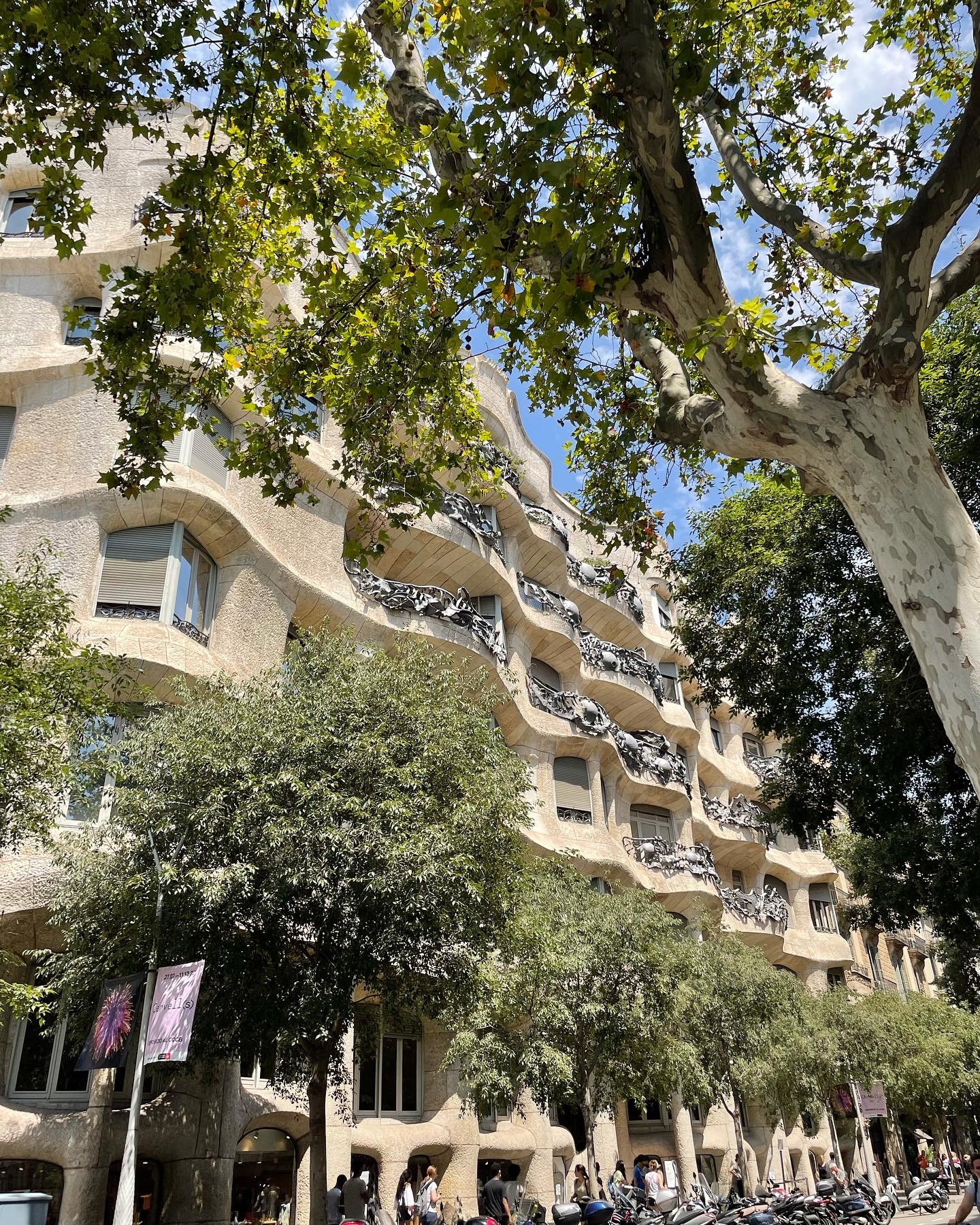I never really had any desire to go to Spain until this summer. My best friend was supposed to be going to Spain with his soccer team, so I thought I’d travel around Europe and meet him there. However, he never got his passport, so I never even got to meet him there. Nevertheless, Barcelona ended up being one of my favourite places I have ever traveled to, and I loved it so much that I even ended up booking an extra night in the hostel I was at and skipping my next destination.
Day 1: Gothic Quarter and Museums
The gothic quarter is a neighbourhood in Barcelona filled with medieval narrow streets, art galleries and museums, and tons of trendy bars, pubs, and restaurants.
I had pre-booked tickets for the Moco Museum – a modern art museum showcasing names like Banksy, Kaws, and Basquiat (they have one in Amsterdam too). I’m a student so tickets were a bit cheaper (€9.50 compared to €14.50).
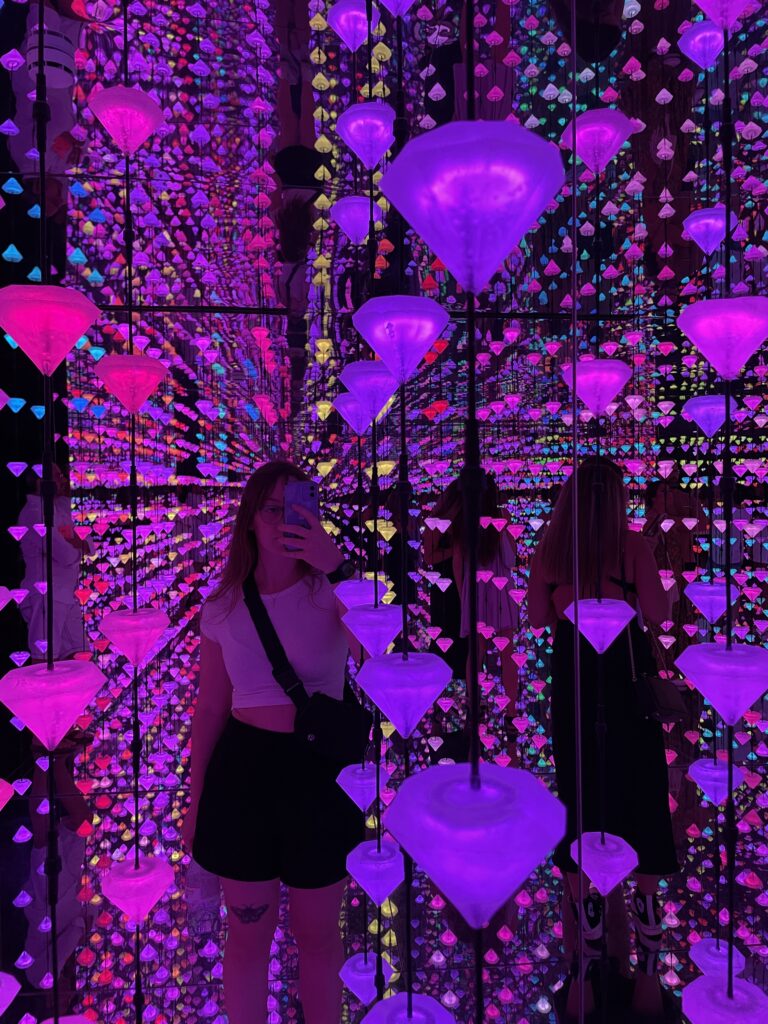
An interactive installation at the Moco Museum. Photo by Author.
Carrer de Montcada, 25, 08003 Barcelona, Spain
Mon – Thu 10:00 – 20:00
My next stop was the Picasso Museum – another one of my favourites – which houses 4,251 pieces of the artists’ work in their permanent collection. Picasso was originally from Catalonia, so this gallery reveals a lot of his personal connections to Barcelona. You can and should pre-book these tickets online and they are again cheaper if you are a student or between the ages of 18-25 (€7 compared to €12) and on Thursdays after 17:00, the first Sunday of each month, and a few select holidays, admission is free.
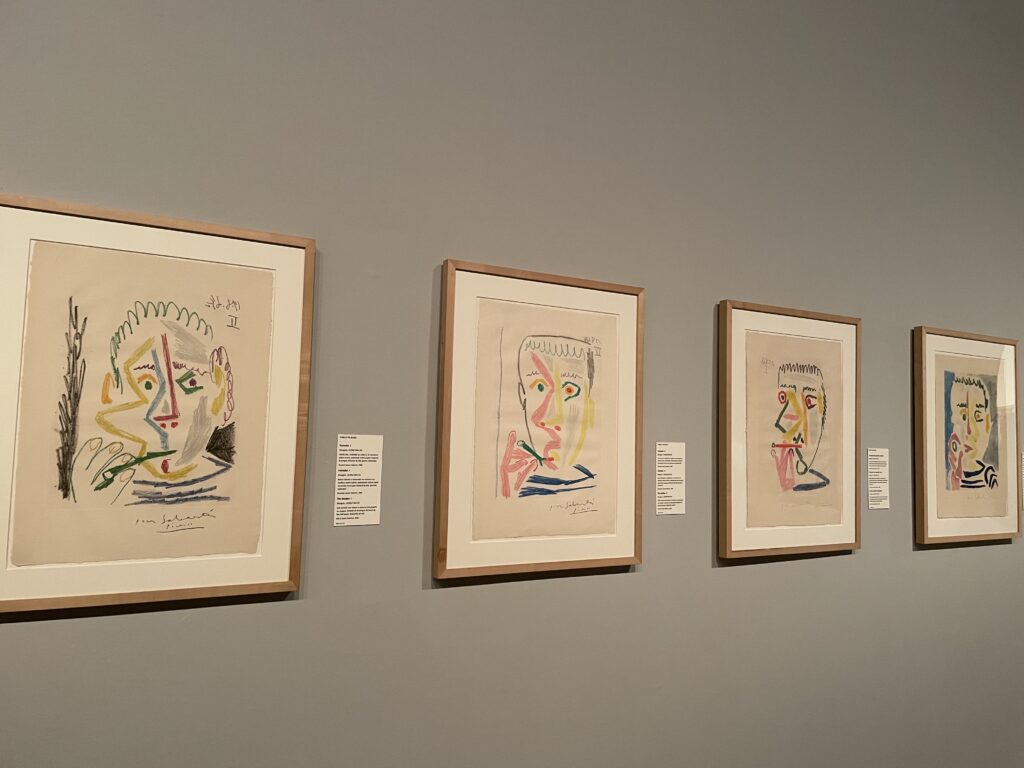
A series of Picasso artworks in the Picasso Museum. Photo by Author.
Carrer de Montcada, 15-23, 08003 Barcelona, Spain
Tuesday – Sunday 10:00 – 19:00
** Museum entry is free to most museums on the first Sunday of every month, here is a list of museums that are free on Sundays, the first Sunday of the month, and other holidays in Barcelona
Both Museums are in the Barri Gotic (Gothic Quarter), a neighbourhood full of narrow medieval streets and trendy bars, clubs, and restaurants. You can take a walking tour of this area with one of the many free tour companies in the city (I went with donkey tours). You can also do your own walking tour and stop at places like:
Cathedral of Santa Eulalia which is also often referred to as the Barcelona Cathedral.
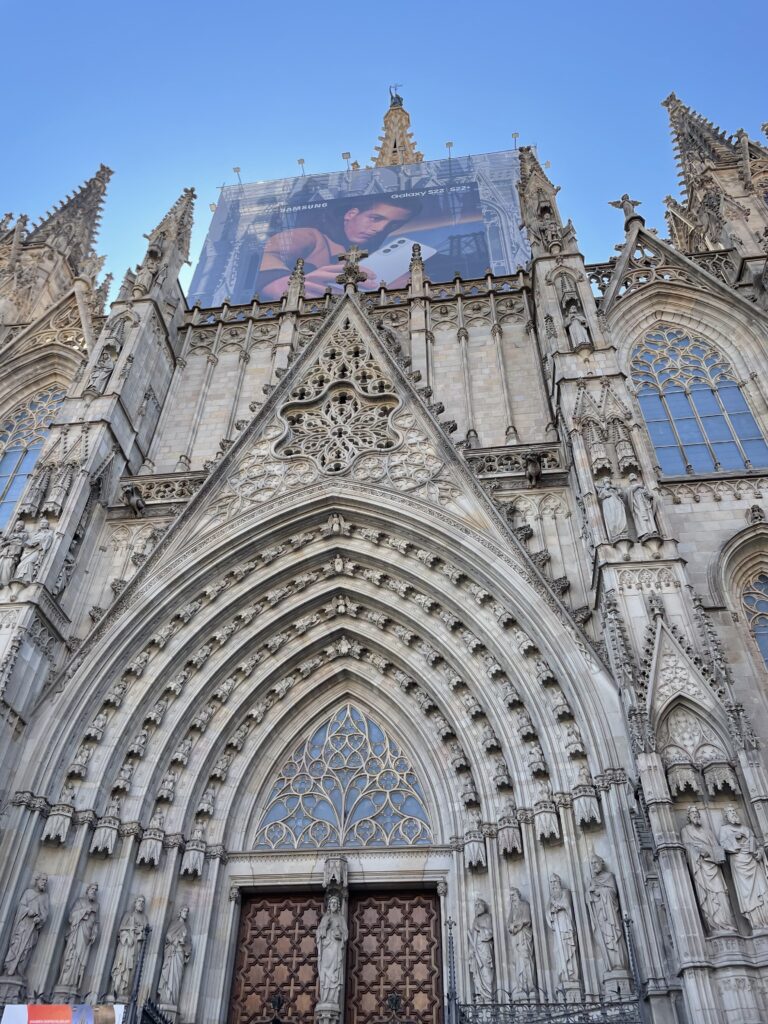
Cathedral of Santa Eulalia. Photo by Author.
Pla de la Seu, s/n, 08002 Barcelona, Spain
Monday – Saturday 8:00 – 12:45, 13:00 – 17:30, 17:45 – 19:30
Sunday 8:00 – 13:45, 14:00 – 17:00, 17:15 – 20:00.
The Palau de la Música Catalana (Palace of Music) – the beautiful concert hall designed by Lluís Domènech i Montane in the Catalan Modernista Style. Both the inside and out are so intricately and colourfully designed, it is certainly worth a visit.
You can also take a visit of the inside for €16 or €20 for a guided tour. You can even attend a concert as it is still an operating concert hall or check out their escape room (€27).
C/ Palau de la Música, 4-6, 08003 Barcelona, Spain
The Basilica of Santa Maria del Mare is just down the Street from the Moco Museum and is a great example of Catalan Gothic architecture. The church took 55 years to build and is now considered one of the most beautiful Gothic churches in the city. Admission is free.
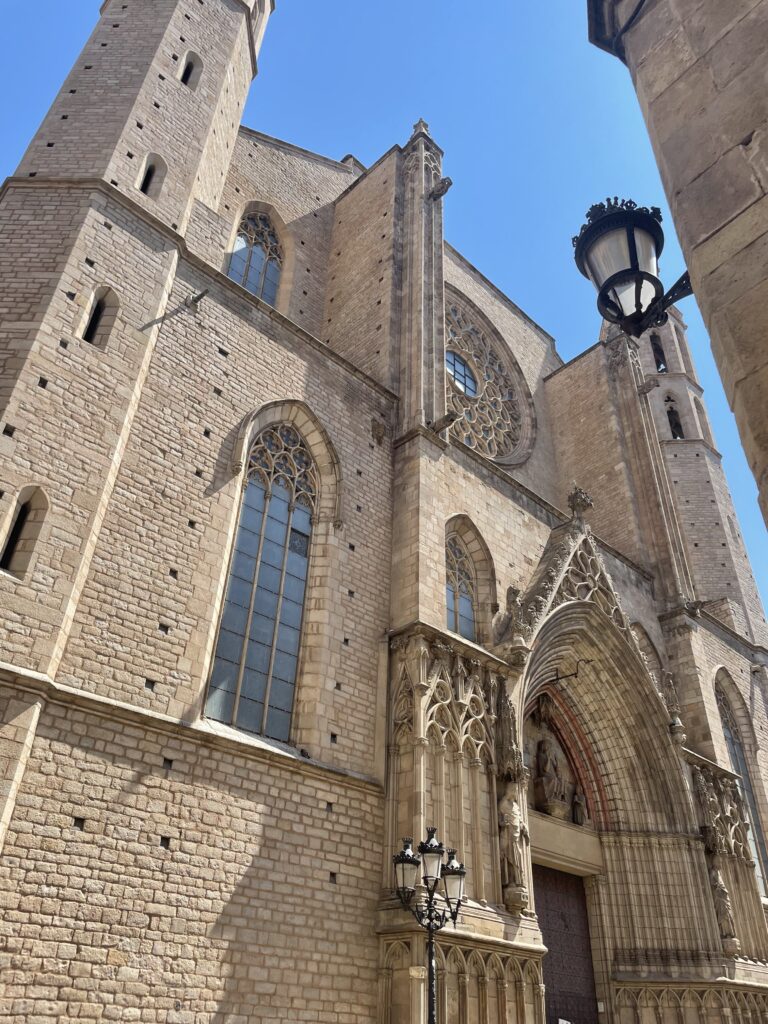
The Basilica de la Santa Maria del Mare. Photo by Author
Plaça de Santa Maria, 1, 08003 Barcelona, Spain
Monday – Saturday 9:00 – 13:00, 17:00 – 20:30
Sunday 10:00 – 14:00, 5:00 – 8:30
You could even just spend the day wandering around this area as it’s full of narrow medieval alleyways, street art, sculptures, shops, and even a few local markets. However, I strongly suggest that you take a free walking tour of the Gothic Quarter (or any area of Barcelona, there’s a ton!) because the guides know what they’re talking about and their level of enthusiasm relies on your tips, you can pay them whatever you think their service was worth. Plus, city tours are a great way to learn about the history of the places you are seeing.
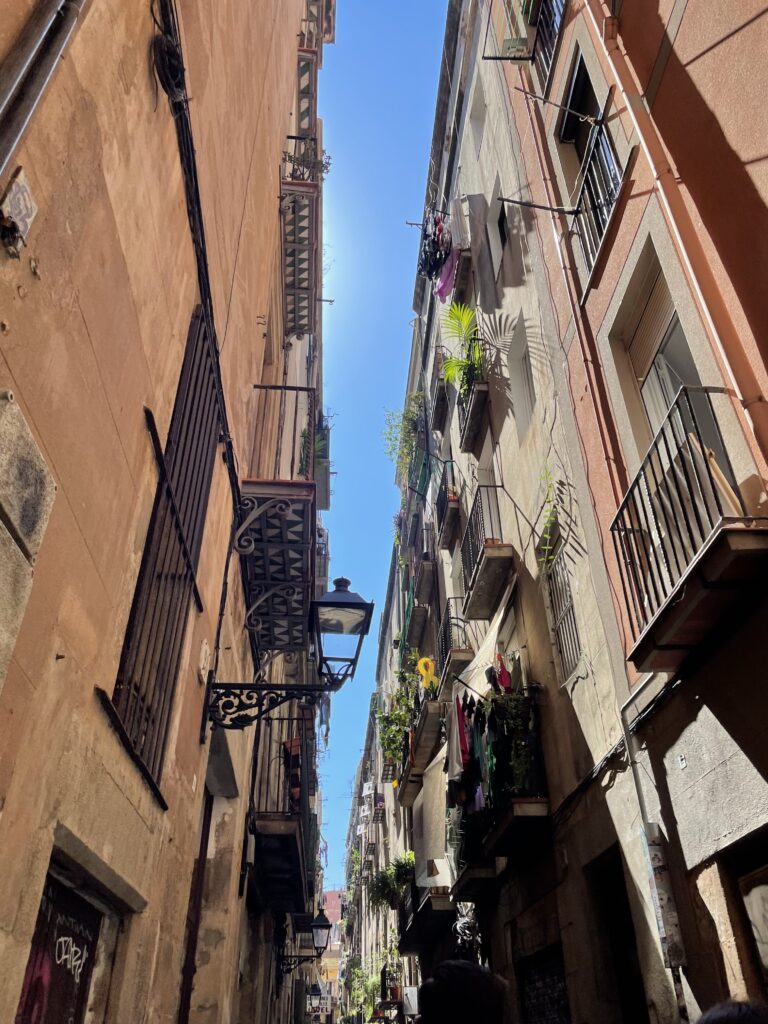
One of the many medieval alleyways in the Barri Gothic. Photo by Author.
Day 2: Gaudi’s most famous designs
Antoni Gaudí was a Catalan architect from Spain, known as one the greatest exponent of Catalan Modernism. Most of his works are located in Barcelona including his most famous: The Sagrada Familia, Casa Milà, Casa Batlló, and Park Guell.
Start the day at Gaudí’s Park Güell, one of the most gorgeous parks in the city. The park is full of the artist’s mosaics and many gorgeous gardens. The park is also located on top of Carmel hill, so it offers gorgeous views of the city. I was dumb enough to assume I could buy tickets the day I wanted to go in the middle of peak season so I actually never got to see the park on my trip, however you can buy tickets here.
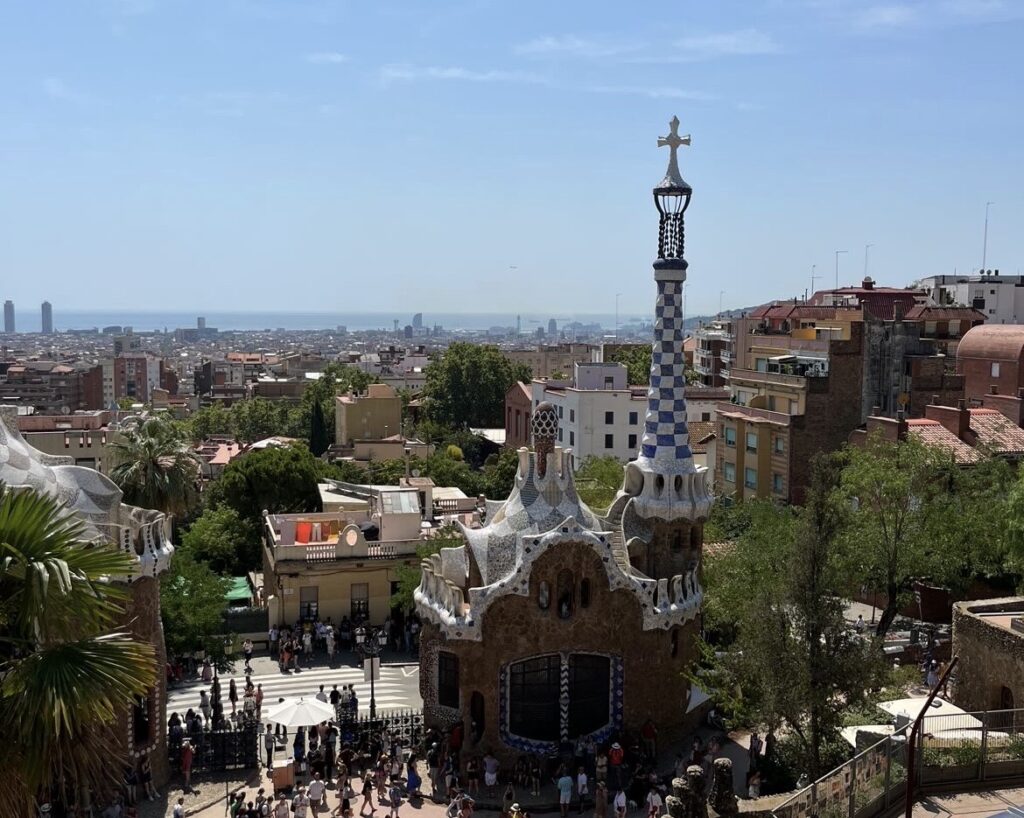
Park Güell. Photo by Patrick Izett.
08024 Barcelona, Spain
Monday – Sunday 9:30 – 19:30
I went to Barcelona in August so prebooking the ticket for the Basílica de la Sagrada Família was a must. This is one of Antoni Gaudí’s most well-known designs and is still under construction and likely won’t be finished until 2026. The basilic feature two different styles on the façade and is so intricately designed and thought out – every single detail from the bottom to the top, inside and out has a significant meaning. The interior is filled with colourful stained-glass windows and monumental pillars mimicking trees. I booked through the official website because it was actually the cheapest option (€17 when I went) and came with an included audio guide.
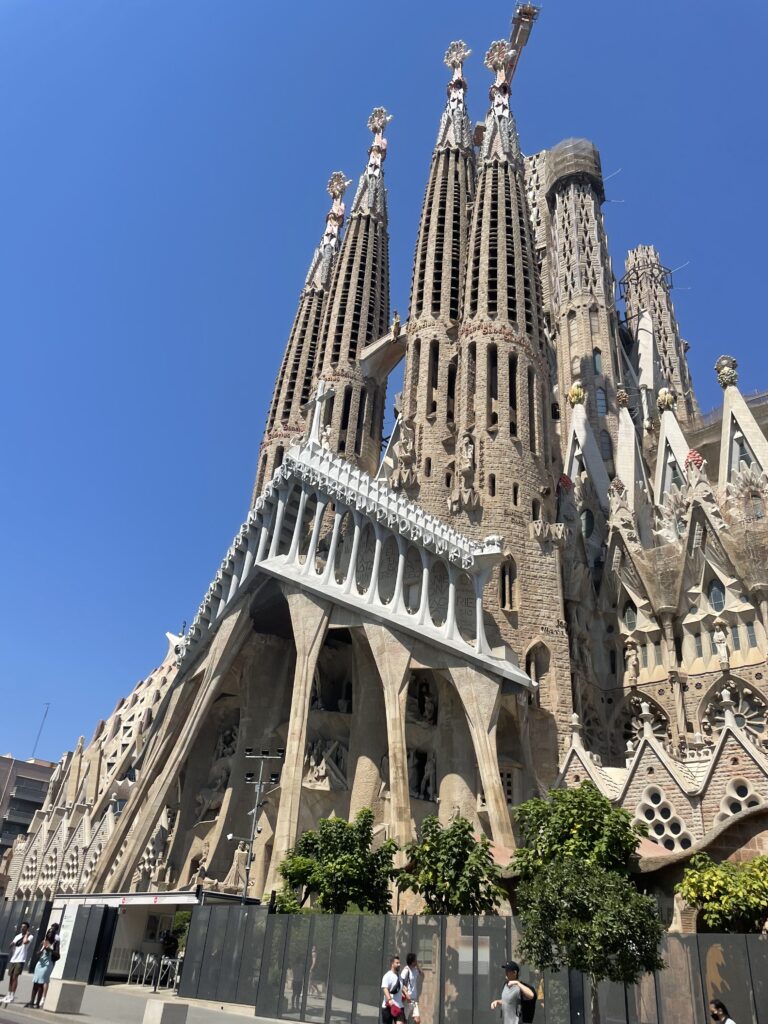
Basílica de la Sagrada Família. Photo by Author.
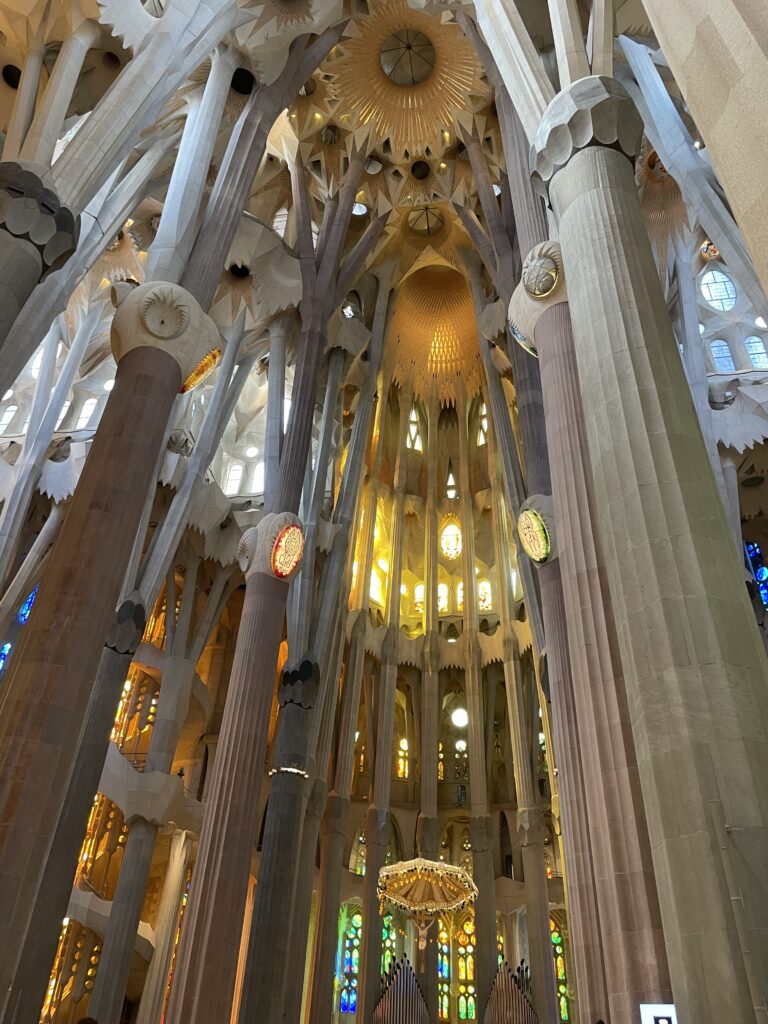
Inside the Basílica. Photo by Author.
C/ de Mallorca, 401, 08013 Barcelona, Spain
Monday – Sunday 9:00 – 18:00
The Sagrada was a half hour walk from the hostel I was staying in, so I took the tram there and walked back. Along the way I stopped at Casa Milà, the last private residence designed by the artist. It now houses exhibits and cultural centre. This building Is often referred to as ‘la Pedrera” or the quarry because of its strange design and architectural process. The building is rather bland and made of light-coloured stones, however they are contrasted by the unusual wave shape of the building and the iron sculptures layered around the balconies.
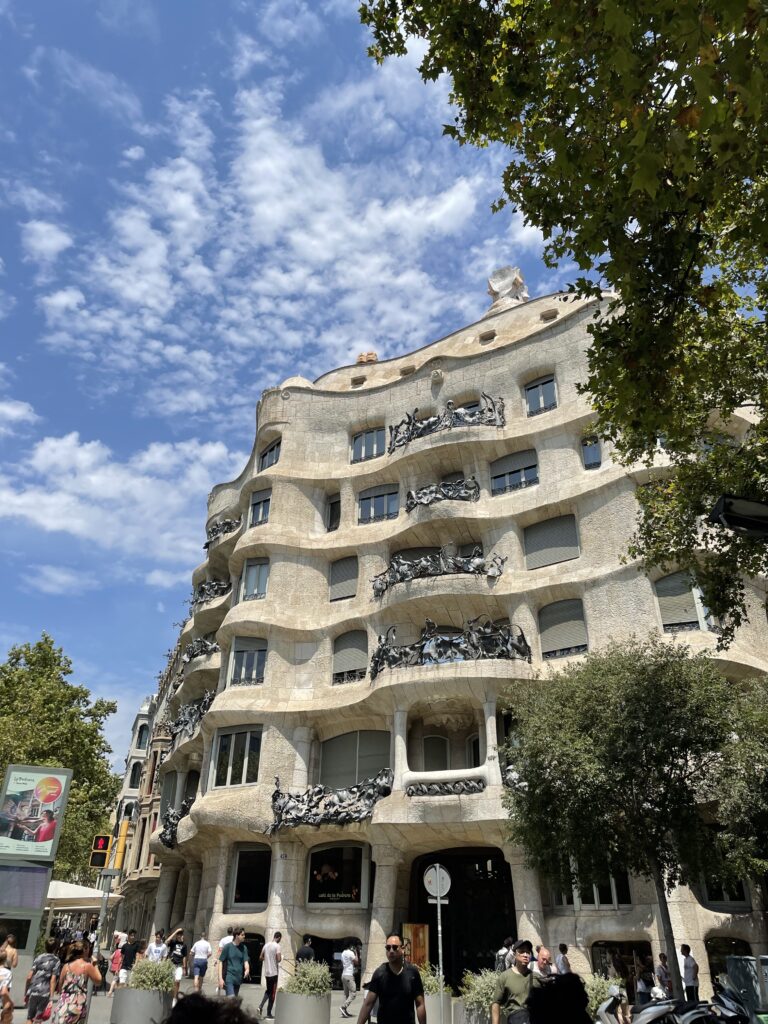
Casa Milà. Photo by Author.
You can get tickets to go inside here, which is apparently worth the high price point however, I think that most people just admire the façade.
Passeig de Gràcia, 92, 08008 Barcelona, Spain
Monday – Sunday 9:00 – 22:00
Just down the street is the Casa Batllò, another one of the artists intricately designed residences. The façade is covered in mosaics of blue, green, and purple, while the balconies eerily mimic skulls. You can buy tickets to go inside here, but again, most people just admire the façade as its quite expensive to go inside.
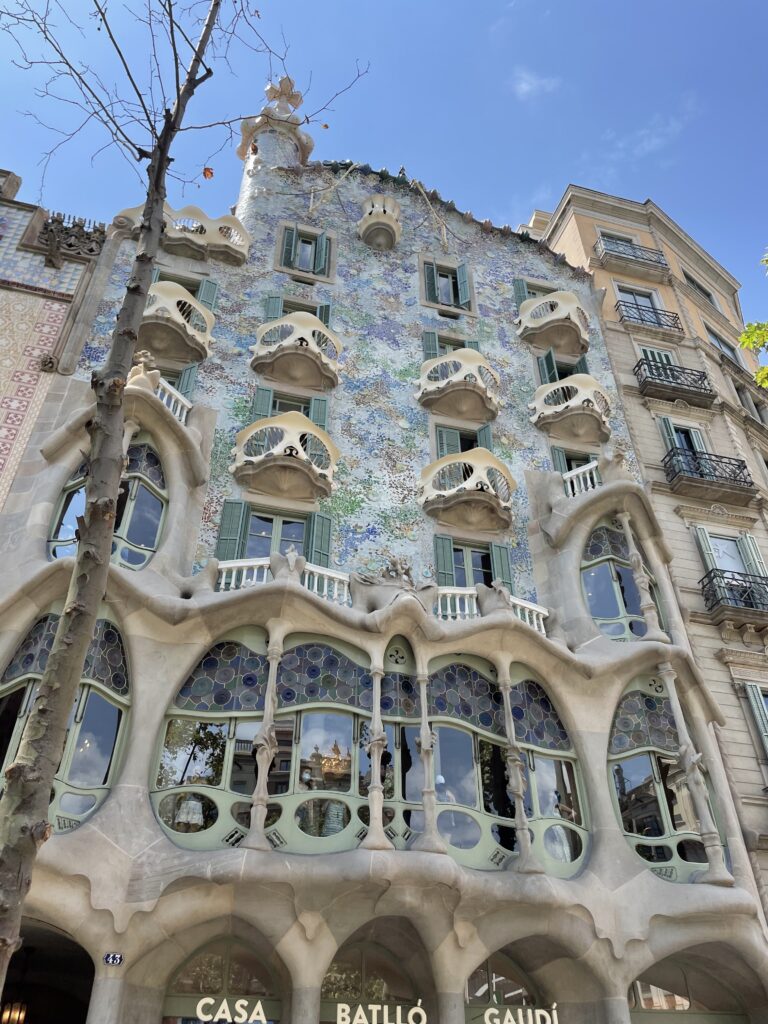
Casa Milà façade. Photo by Author.
Passeig de Gràcia, 43, 08007 Barcelona, Spain
Monday – Sunday 9:00 – 20:00
Day 3 Barceloneta and Park de la Ciutadella.
Whether you’re visiting in the Summer or the Winter, the Arc de Triomf, Parc de la Ciutadella and La Barceloneta are some spots worth visiting.
Even the Catalan’s have their own version of the Arc de Triumph. Built in the 1880’s as the entrance to the world exhibition, the Catalonian Arc de Triomf sits at the top of the Passeig Lluís Companys. Along the passeig you will find locals cycling, relaxing amongst the palm trees, or even playing shuffleboard. This is a cute little area for a picnic or to stop and rest your feet and eat an ice cream shaded from the Spanish sun like I did.
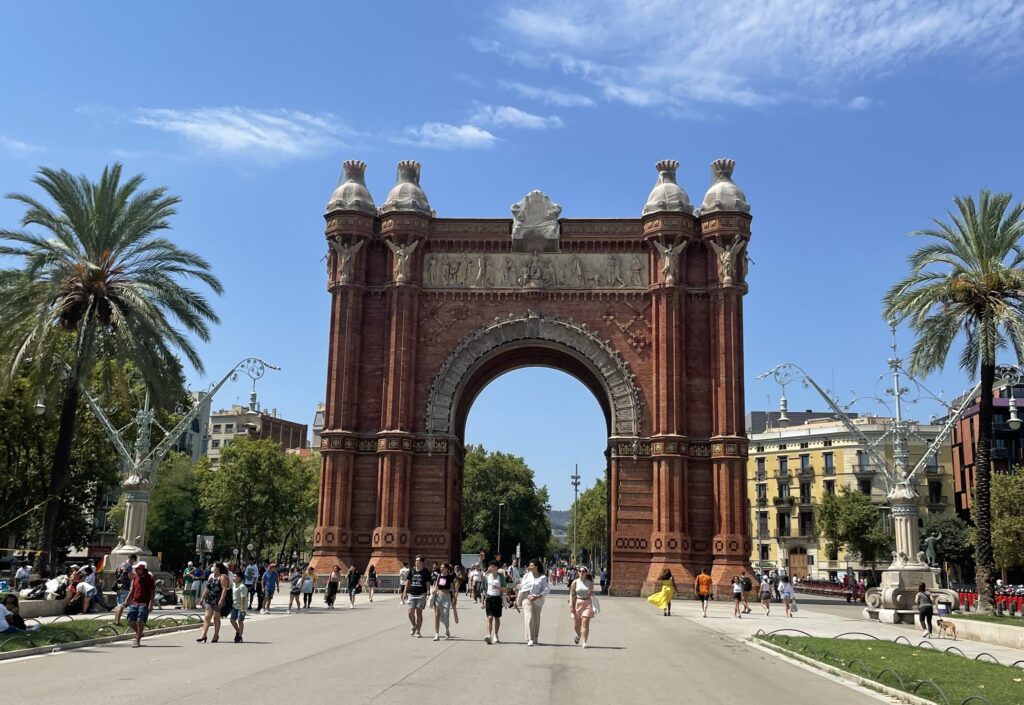
Arc de Triomf. Photo by Author.
Pg. de Sant Joan, s/n, 08018 Barcelona, Spain
On the opposite side of the Passeig from the Arc de Triomf you will find the Parc de la Ciutadella, an idyllic green oasis which used to be the cities only green space. It’s a cute little park filled with greenery, ponds, and ornate, gold-plated fountains. You will find people relaxing and suntanning throughout the park, paddling around in one of the small lakes or maybe even dancing salsa in the Gazebo across from Gaudí’s fountain. The park is also full of sculptures by varying artists and that gazebo is actually an art piece dedicated to a murdered trans woman. This park is also home to the Parlement de Catalunya, a green house and botanical garden, a zoo, and a few museums.
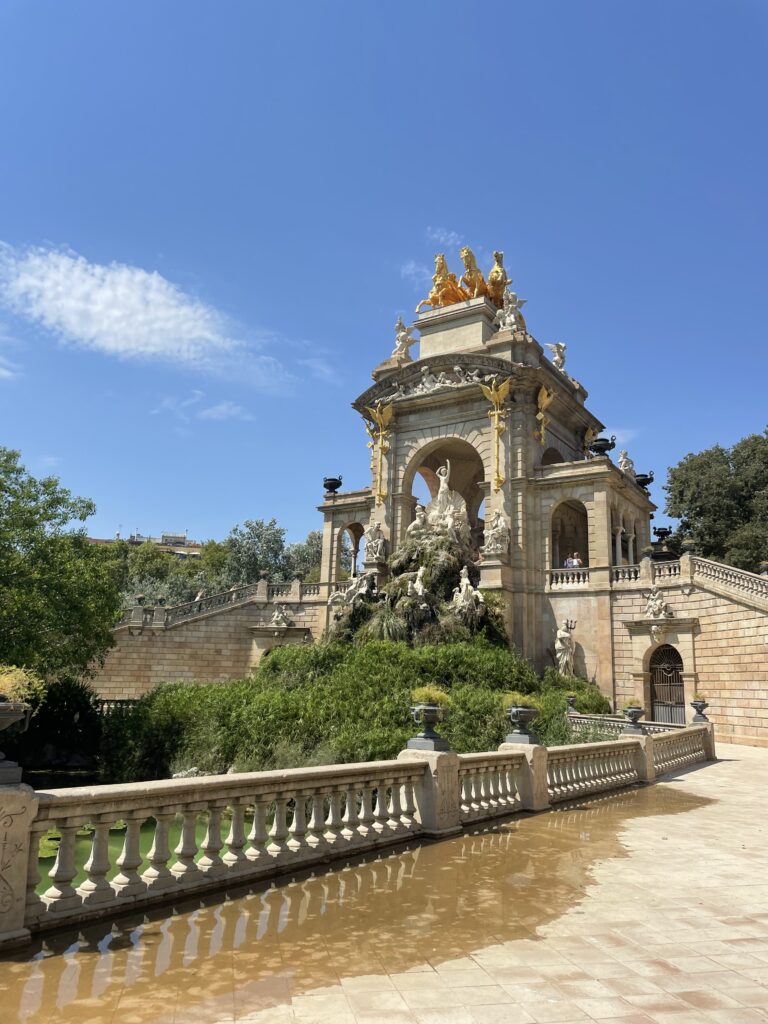
Gaudí’s structure above the fountain in Parc de la Ciutadella. Photo by Author.
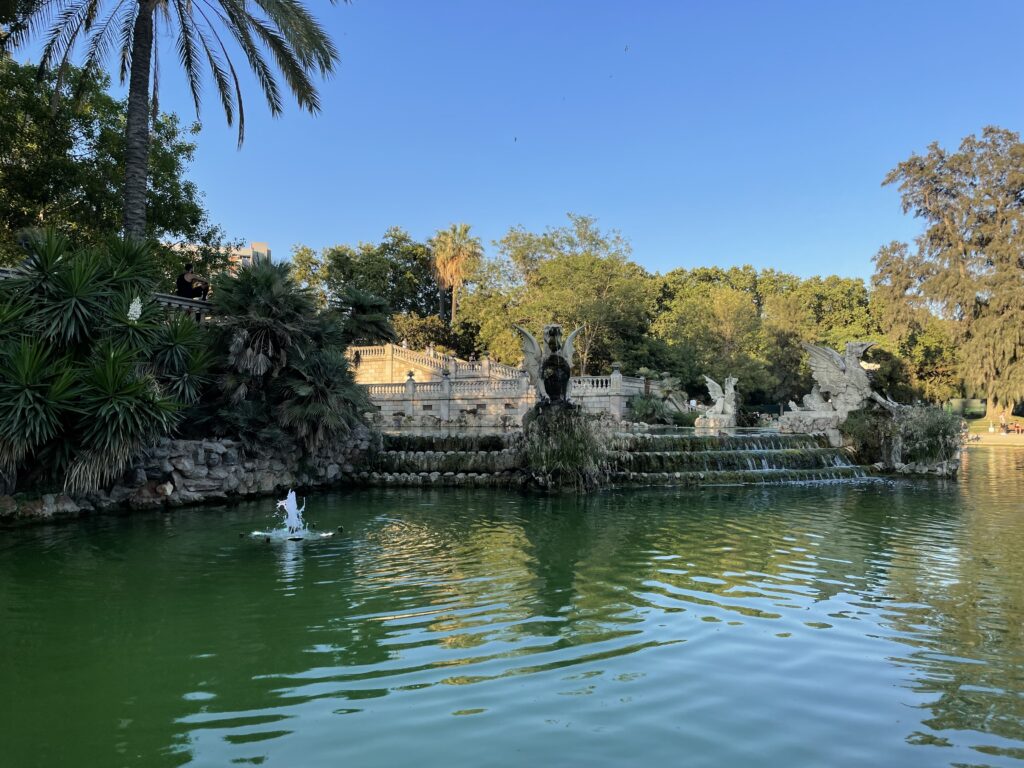
Pond and fountain in Parc de la Ciutadella.
Passeig de Picasso, 21, 08003 Barcelona, Spain
Monday – Sunday 10:00 – 22:30
Only a 15-minute walk from the park is La Barceloneta, the most popular beach area in the city. In the summer you will find the streets bustling with both locals and tourists and the beaches filled with sunbathers – don’t be surprised if you see a few people tanning au naturelle. The area used to be essentially uninhabited aside from local fishermen, however it is now one of the most popular areas in the entire city. There are tons to do in this area apart from just lounging at the beach. Wander the old narrow streets, or watch the fishermen unload their daily catch and auction off their fish at sunset. There is also a history museum, aquarium, Imax theatre, and even a cable car that will take you to the Miramar gardens.

Barceloneta Beach. Photo via Genesis Paucar Borja on Pinterest.
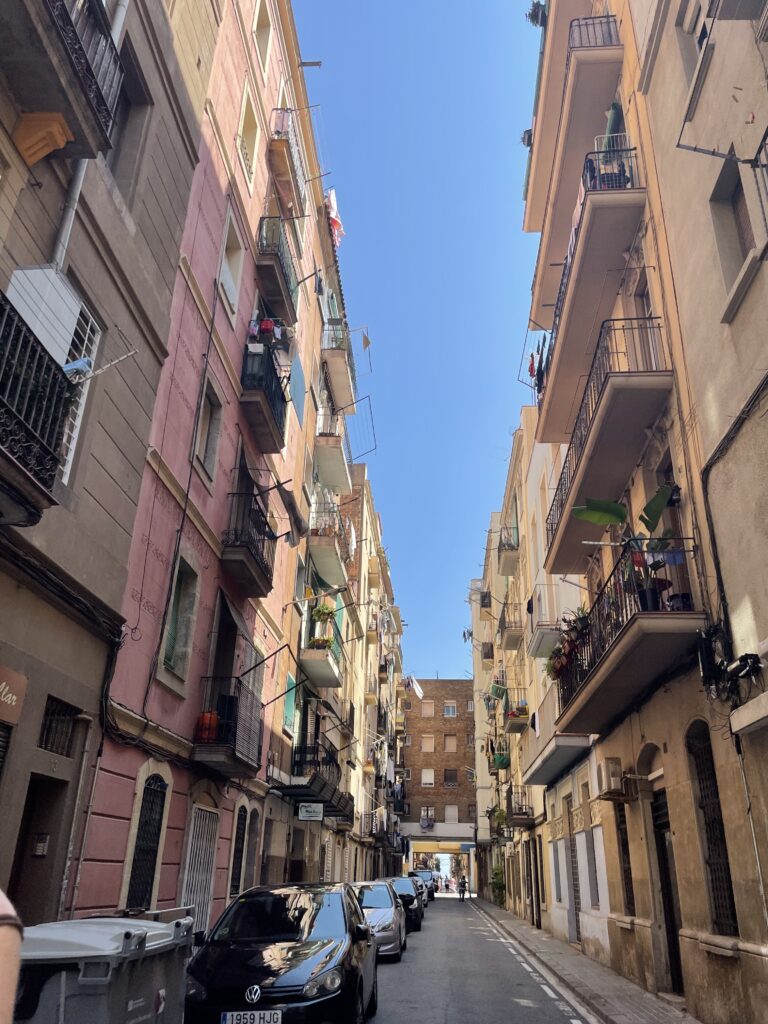
Alleyway in Barceloneta neighbourhood. Photo by Author.
Barcelona is jam-packed with things to do for every tourist, and you couldn’t possibly fit in every stop in three days. The list goes on and on of things you can do in this city, and this is only a small fraction of it. To see a small video of some of my favourite spots in Barcelona and content from some of my past and future travels click here.
